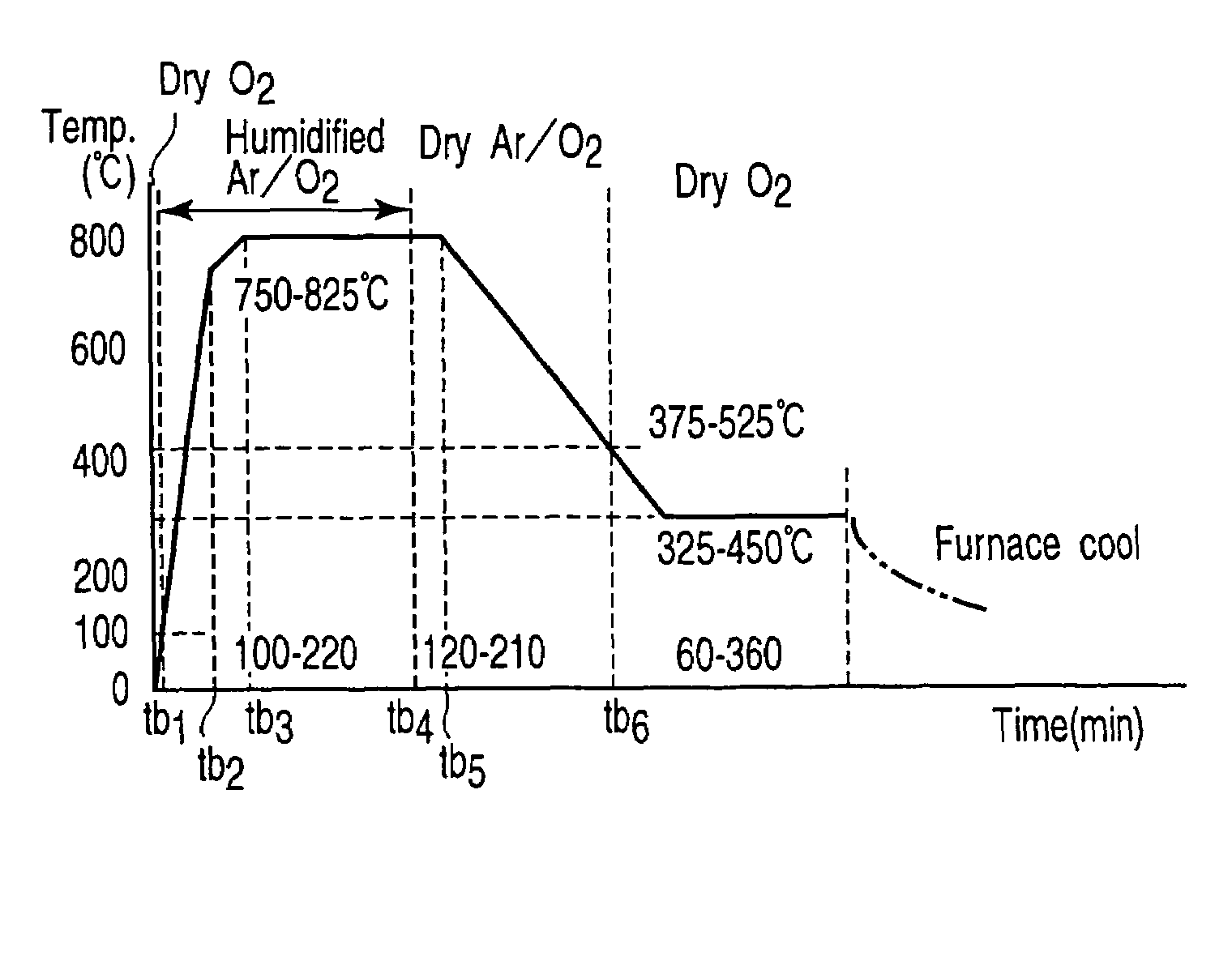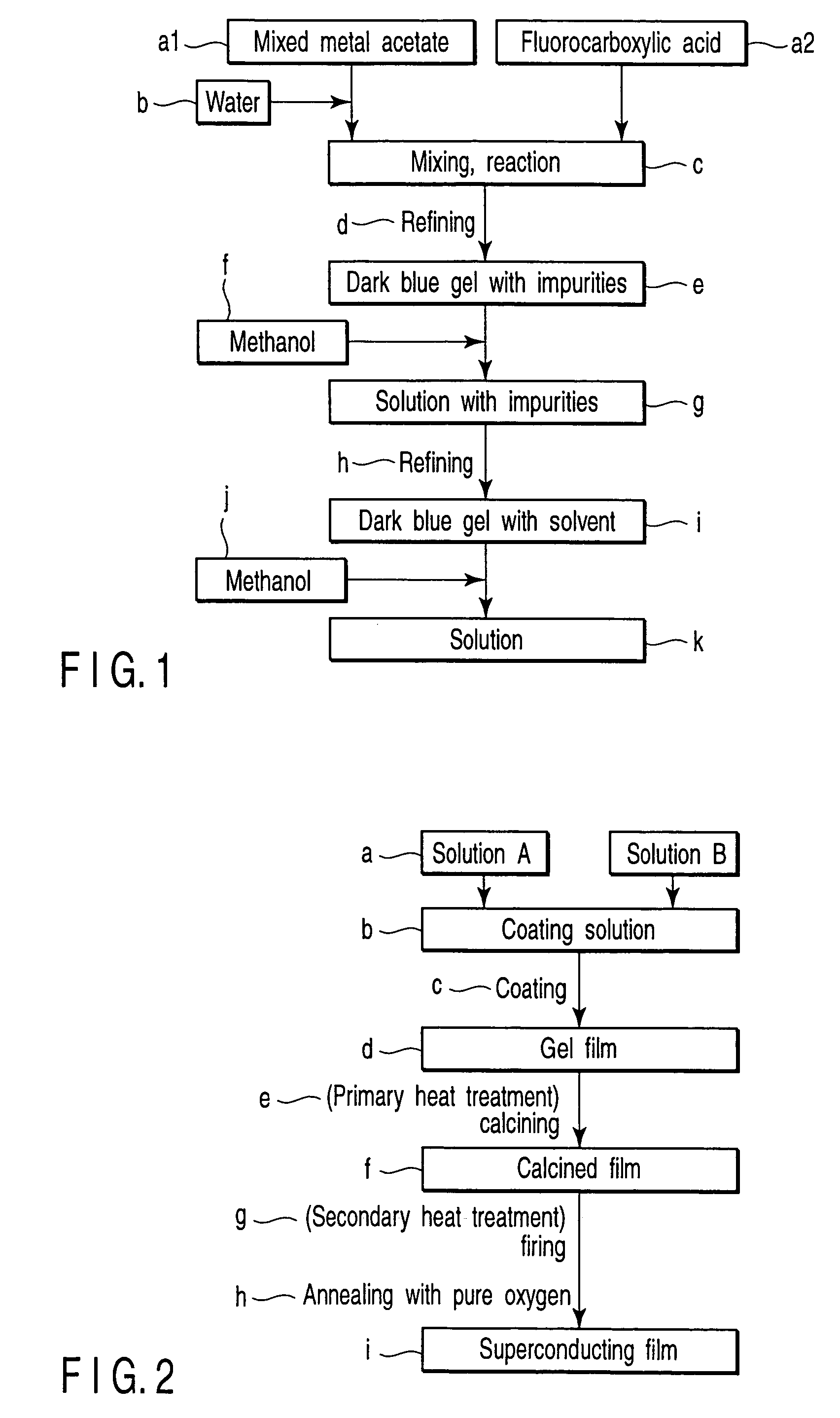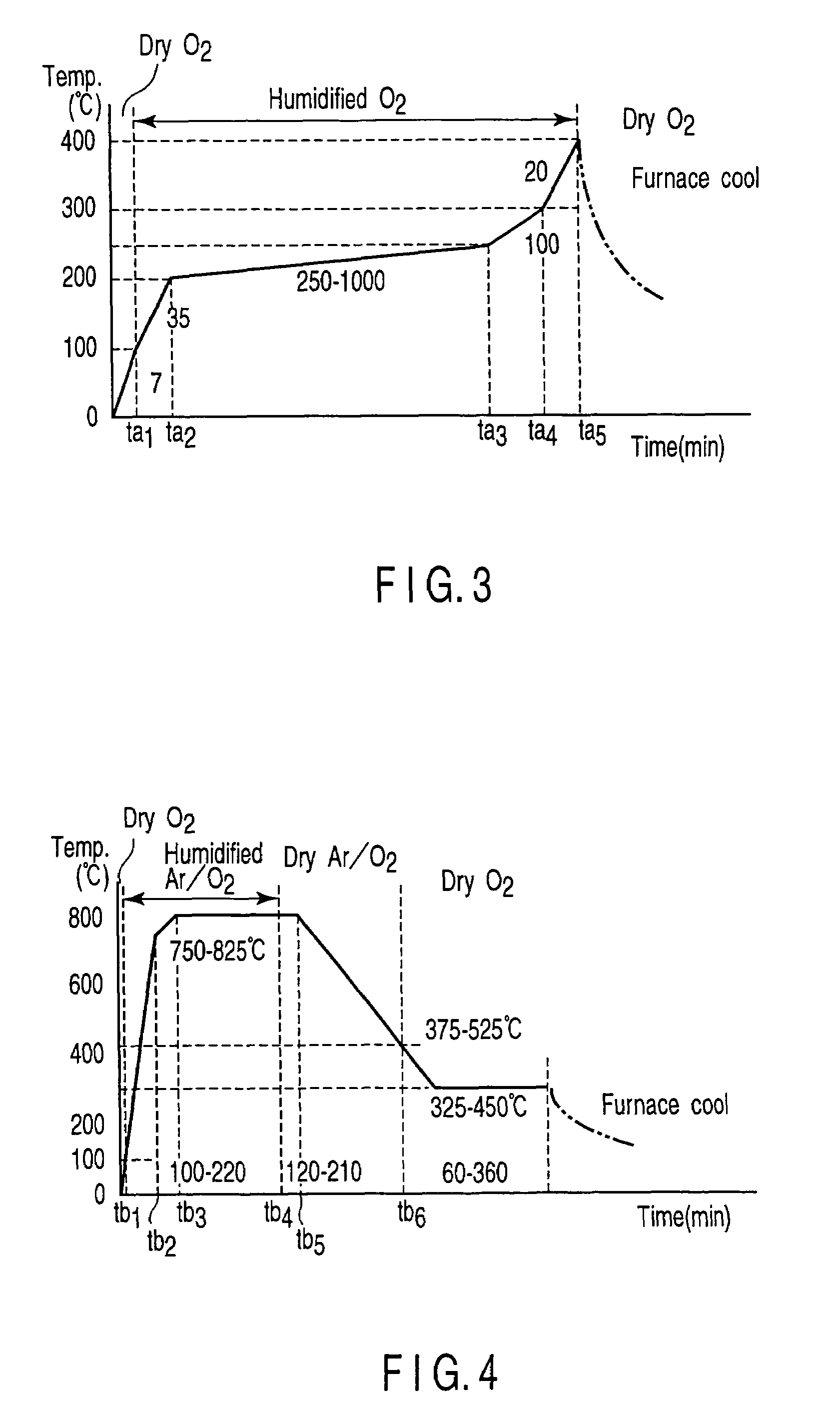Oxide superconductor and method of preparing the same
a superconductor and superconducting technology, applied in the field of oxide superconductor, can solve the problems of difficult preparation of superconducting film having good characteristics and high reproducibility, difficult to form homogeneous film, and presumably low purity of solutions, so as to reduce the amount of impurities
- Summary
- Abstract
- Description
- Claims
- Application Information
AI Technical Summary
Benefits of technology
Problems solved by technology
Method used
Image
Examples
example 1
[0064]Powder of about 3.7 hydrate of (CH3COO)3Y, (CH3COO)2Ba anhydride, and blue powder of about 1.0 hydrate of (CH3COO)2Cu were dissolved in ion exchange water such that a molar ratio of Y:Ba:Cu was 1:2:3 to prepare an acetate solution. The acetate solution and an equimolar amount of trifluoroacetic acid (CF3COOH, TFA) were mixed and stirred in an eggplant type flask. The solution mixture was reacted and refined under reduced pressure for about 10 hours with a rotary evaporator to provide a dark blue gel SL1Yspg (system preliminary gel).
[0065]The gel SL1Yspg was completely dissolved by adding methanol equivalent to a weight about 100 times that of the gel to provide a blue solution. The blue solution was refined again under reduced pressure for about 12 hours with a rotary evaporator to provide a dark blue gel SL1Ysg (this method will be referred to as an SIG (Solvent-Into-Gel) method hereinafter). The gel SL1Ysg was dissolved in methanol again and diluted with a measuring flask to...
example 2
[0091]Powder of about 3.7 hydrate of (CH3COO)3Y and blue powder of about 1.0 hydrate of (CH3COO)2Cu were dissolved in ion exchange water such that a molar ration of Y:Cu was 1:3 to prepare an acetate solution. The acetate solution and an equimolar amount of pentafluoropropionic acid (CF3CF2COOH, PFP) were mixed and stirred in an eggplant type flask. The solution mixture was reacted and refined under reduced pressure for about 10 hours with a rotary evaporator to provide a dark blue gel SL2YCupg-PFP. The gel SL2YCupg-PFP was refined by the SIG method to provide a gel SL2YCug-PFP, which was dissolved in methanol to provide a solution SL2YCu-PFP with a concentration of 1.50 mol / L in terms of metal ions.
[0092]A solution SL2YCu-HFB with a concentration of 1.50 mol / L in terms of metal ions was provided following the same procedures as above, except that heptafluorobutanoic acid (CF3CF2CF2COOH, HFB) was used instead of pentafluoropropionic acid (CF3CF2COOH, PFP).
[0093](CH3COO)2Ba anhydride...
example 3
[0100]Powder of about 3.7 hydrate of (CH3COO)3Y was dissolved in ion exchange water, and the solution was mixed with an equimolar amount of trifluoroacetic acid (CF3COOH, TFA) in an eggplant type flask. The mixture was reacted and refined under reduced pressure for about 10 hours with a rotary evaporator to prepare white powder SL3Ypg. The powder SL3Ypg was refined by the SIG method to prepare SL3Yg, which was dissolved in methanol to prepare a solution SL3Y with a concentration of 1.50 mol / L in terms of metal ions.
[0101]White powder SL3Gdpg was provided following the same procedures as above except that powder of about 4.4 hydrate of (CH3COO)3Gd was used instead of the powder of about 3.7 hydrate of (CH3COO)3Y. The powder SL3Gdpg was refined by the SIG method to prepare SL3Gdg, which was dissolved in methanol to prepare a solution SL3Gd with a concentration of 1.50 mol / L in terms of metal ions.
[0102]Light orange powder SL3Hopg was provided following the same procedures as above exc...
PUM
| Property | Measurement | Unit |
|---|---|---|
| thickness | aaaaa | aaaaa |
| bonding angle | aaaaa | aaaaa |
| molar ratio | aaaaa | aaaaa |
Abstract
Description
Claims
Application Information
 Login to View More
Login to View More - R&D
- Intellectual Property
- Life Sciences
- Materials
- Tech Scout
- Unparalleled Data Quality
- Higher Quality Content
- 60% Fewer Hallucinations
Browse by: Latest US Patents, China's latest patents, Technical Efficacy Thesaurus, Application Domain, Technology Topic, Popular Technical Reports.
© 2025 PatSnap. All rights reserved.Legal|Privacy policy|Modern Slavery Act Transparency Statement|Sitemap|About US| Contact US: help@patsnap.com



